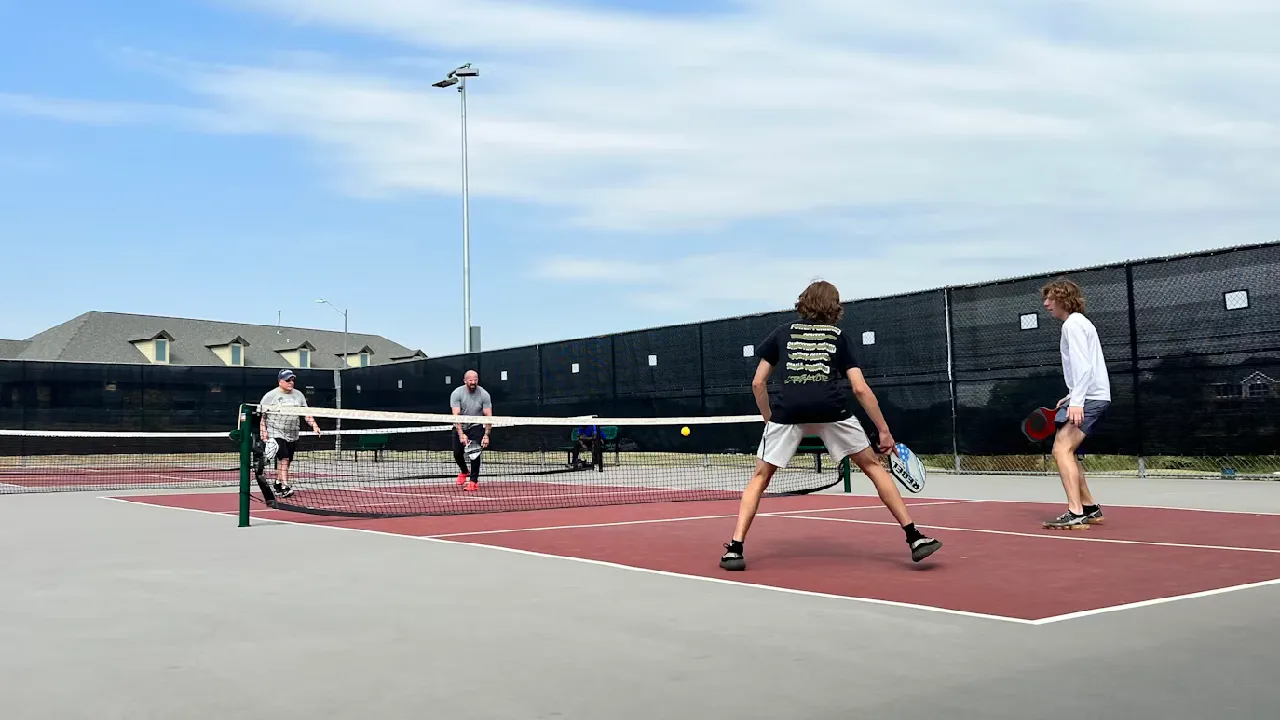Pickleball Round Robin: The Ultimate Guide to Organizing and Playing
Pickleball has exploded in popularity in recent years, attracting players of all ages and skill levels. One of the most inclusive and fun formats for tournaments and club events is the round robin. In a round robin, every participant (or team) plays against every other participant, ensuring maximum court time, fair competition, and plenty of social interaction. Whether you’re a club organizer, coach, or a group of friends looking to spice up your games, this guide will walk you through everything you need to know about running a successful pickleball round robin.
What Is a Round Robin?
A round robin is a tournament format where each team or player competes against every other participant in their division. Unlike single-elimination brackets where a loss means you’re out, round robin ensures every team gets multiple matches, fostering more play and minimizing “one-and-done” frustration.
Prospective benefits include:
Guaranteed play time for all participants
Fairness—everyone faces the same opponents
Opportunities for skill development and socializing
For detailed court solutions to host your round robin, check out our Custom Pickleball Courts!
Benefits of the Round Robin Format
Inclusivity and Engagement: Every player or team is assured multiple matches, keeping morale high.
Fair Competition: Since each participant plays every other one, final standings reflect overall performance rather than a single lucky win.
Skill Improvement: Repeated play against varied opponents hones adaptability and strategy.
Social Interaction: More matchups mean more time to connect, swap tips, and build community.
Flexibility: Ideal for both small gatherings and large club events; you can adjust court time and divisions easily.
Planning Your Round Robin Event
Court Requirements
Number of Courts: Estimate based on participants. For 16 teams in doubles, four courts allow a full round every round of play.
Surface: Consistent bounce and traction are paramount; explore our Premium Court Surfaces for guidance.
Equipment: Nets, balls, scoreboards, and seating.
Participant Registration
Online Sign-Up: Use tools like Google Forms or pickleball club software.
Information Collected: Name, skill level, partner (for doubles), contact info, any special requests.
Fees & Waivers: Collect entry fees and have participants sign liability waivers.
Skill-Level Divisions
Beginner (2.0–2.5), Intermediate (3.0–3.5), Advanced (4.0–4.5+)
Group players into balanced pools to maintain competitive equity.
Scheduling Matches
Round Robin Scheduling Methods
Standard Round Robin Chart: For n teams, each team plays n–1 matches.
"Bye" System: If odd number of teams, one team sits out (“bye”) each round.
Time-Slot Allocation: Predetermine 20- or 30-minute slots per match, allowing for warm-up and transition.
Scoring and Standings
Match Scoring Rules
Standard Score: First to 11 points, win by 2.
Best-of-3 Games: Often used in competitive rounds.
Time Limit: In recreational play, a 15-minute cap per match prevents delays.
Tracking Standings
Win-Loss Record: Primary ranking metric.
Game Differential: Secondary metric (games won minus games lost).
Point Differential: Tertiary (total points won minus total points lost).
Tie-Breaker Procedures
In case of identical records:
Head-to-Head Result
Game Differential
Point Differential
Mini Playoff (if time allows)
Using these clear rules keeps competition transparent and fair.
Equipment and Court Setup
Nets & Poles: Regulation height of 36″ at sidelines, 34″ in center.
Pickleballs: Variety of indoor/outdoor balls; ensure consistency across courts.
Court Lines: Bright, durable paint—refer to official dimensions at USA Pickleball guidelines.
Seating & Shade: Provide benches and portable canopies for player comfort.
Consider investing in professional-grade installations from PortaCourts to ensure your courts meet tournament standards.
Tips for Smooth Operation
Volunteer Officials: Assign scorekeepers and court monitors
Clear Signage: Post schedules and standings in a centralized location.
Communication: Use group texts or an app (e.g., Slack) for real-time updates.
Warm-Up Areas: Allocate space for players to stretch and practice serves while waiting.
Food & Hydration: A snack station and water cooler keep energy levels up.
These small touches streamline event flow and maximize player enjoyment.
Additional Read | Best Pickleball Shoes for Women
Player Strategies for Round Robin Success
Pace Yourself: Multiple matches demand endurance—hydrate and rest between rounds.
Study Opponents: Early matches reveal playing styles; adapt tactics in later rounds.
Partner Communication: In doubles, clear signals and court coverage strategies are key.
Consistent Serve: A reliable serve reduces unforced errors and sets the tone for each point.
Net Play: Owning the kitchen (non-volley zone) puts pressure on opponents and shortens rallies.
Round robin rewards adaptability and stamina—players who manage both often top the standings.
Promoting Your Event
Social Media: Create Facebook events, Instagram posts, and Twitter updates featuring branded graphics.
Local Outreach: Partner with community centers, schools, and gyms to spread the word.
Sponsorships: Local businesses can provide prizes or refreshments in exchange for signage.
Email Newsletters: Send periodic reminders and highlight top players or prize details.
Effective promotion fills slots faster and builds anticipation among your pickleball community.
Conclusion
The pickleball round robin format offers the perfect balance of competition and camaraderie. By ensuring every team plays multiple matches, it keeps players engaged and provides a true measure of skill through comprehensive matchups. With careful planning, choosing the right courts, arranging schedules, tracking standings, and promoting your event you can host a seamless round robin that players will rave about.
Ready to elevate your pickleball events? Explore our custom court solutions and premium surfaces at PortaCourts to give your players the very best playing experience. Whether it’s a backyard club gathering or a large-scale tournament, the right court setup is the foundation for success.
FAQs About Pickleball Round Robin Tournaments
1. What is a pickleball round robin tournament?
A pickleball round robin is a tournament format where each team or player competes against every other participant. Unlike elimination tournaments, all players are guaranteed multiple matches, ensuring fair play and more court time for everyone.
2. Why should I choose a round robin format for my pickleball event?
The round robin format offers fairness, skill development, and social interaction. It ensures everyone plays the same number of matches and promotes community bonding—ideal for clubs, leagues, and casual groups.
3. How many courts do I need for a pickleball round robin tournament?
The number of courts depends on how many teams are participating. For example, 16 teams may require at least four courts to keep the rounds running smoothly and on time.
4. How do I schedule matches in a pickleball round robin?
Use a standard round robin chart where each team plays n–1 matches (if there are n teams). For odd numbers, one team will get a "bye" each round. Allocate time slots of 20–30 minutes for each match, including warm-up and transition.
5. What are the standard scoring rules for round robin matches?
Typical matches are played to 11 points, win by 2. In competitive play, a best-of-three games format is common. For recreational events, you can cap matches at 15 minutes to keep things on schedule.
6. How do you determine standings in a round robin pickleball tournament?
Standings are based on win-loss records. If teams are tied, use game differential, point differential, or head-to-head results as tie-breakers. Some events may hold a mini playoff if time allows.
7. What skill levels are used in round robin pickleball events?
Players are usually grouped into three divisions:
Beginner (2.0–2.5)
Intermediate (3.0–3.5)
Advanced (4.0–4.5+)
This keeps the competition balanced and enjoyable for everyone.
8. What equipment is needed for a pickleball round robin?
You’ll need regulation nets, pickleballs, scoreboards, court markers, benches, and shade structures. For high-quality play, consider professional-grade court surfaces like those from PortaCourts.
9. How can I make my pickleball round robin run smoothly?
Assign volunteers as scorekeepers, post match schedules clearly, use group texts or apps for updates, and set up warm-up zones. Also, keep players hydrated and energized with snacks and drinks.
10. What are some tips for players to succeed in round robin format?
Stay hydrated, pace yourself, and adapt your strategy based on opponents. In doubles, communicate with your partner and focus on consistent serving and strong net play.
11. How do I promote a pickleball round robin tournament?
Use Facebook events, Instagram posts, email newsletters, and local community outreach. Partnering with local sponsors can also boost engagement and offer perks like prizes or refreshments.
12. Can I host a round robin tournament at home or in my club?
Absolutely! With proper planning and the right court setup, such as a custom pickleball court from PortaCourts, you can host professional-level events in your backyard or club.
COMMENTS
Sort by :





Leave A Comment